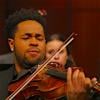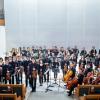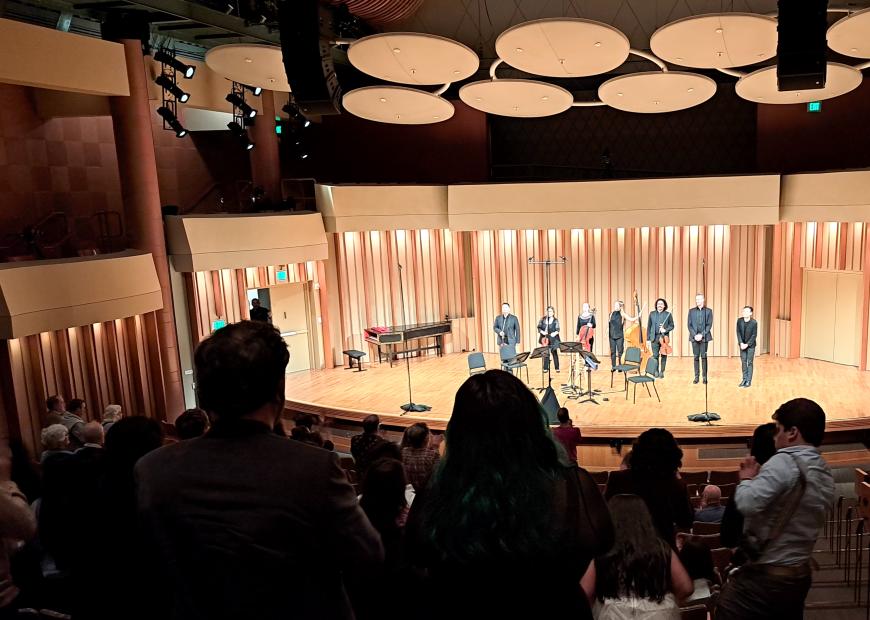
When you schedule a concert that begins with J.S. Bach’s Harpsichord Concerto No. 3 in D Major, BWV 1054, ends with Mozart’s Eine kleine Nachtmusik, K. 525, and in between squeezes miniature compositions by five contemporary composers — Peter S. Shin, Valerie Coleman, Julia Adolphe, Trevor Weston, and Steven Snowden — the result is bound to be something of a candy sampler.
That being said, the accomplished level of the musicianship and some skillfully sequenced programming made Saturday’s concert by Kaleidoscope Chamber Orchestra at First Presbyterian Church of Santa Monica a rewarding experience — even if it did leave you hungry for more.
Kaleidoscope operates on an unusual formula. Admission is based on a pay-what-you-can model, which makes grants and donor contributions essential. Nevertheless, every year the group manages to commission a significant number of new works; two of Saturday’s pieces were commissioned world premieres.
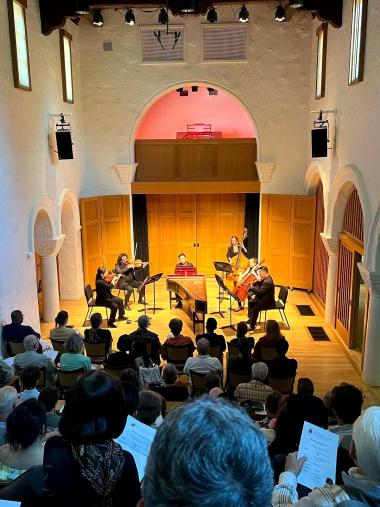
Kaleidoscope hires exceptional musicians from (and beyond) the L.A. talent pool. Numbers are flexible, from single soloists up to 40 members for large symphonic works. And the ensemble rarely has a conductor.
Saturday’s concert began with a buttery-warm rendition of the Bach concerto, with Kevin Ahfat making his harpsichord debut. If he hadn’t told the audience that fact, I doubt anyone would have known; his performance was that adroit.
Announcing the details of each piece from the stage (the program notes were scant), Ahfat told the audience that Peter Shin’s Elgar’s serenade for strings no2, but you’re back in San José was a musical reference to the devastating, disorienting onset of dementia. It was the first world premiere.
That explanation definitely contextualized the piece’s proclivity for drifting like vapor between thematic threads, with in-and-out references to Elgar’s serenade serving as a through line. The vapor trails were texturally accented by wisps from the strings (violinists Emilie-Anne Gendron and Jae Cosmos Lee, violist Luis Eduardo Bellorín, cellist Juliette Herlin, and bassist Maggie Cox), with Ahfat again at the harpsichord and Douglas DeVries on flute.
Valerie Coleman, a virtuoso flutist, has written a number of works for the instrument, including Danza de la Mariposa, which DeVries performed with fluency and an abundance of extended techniques. Meant to flutter like the wings of South American butterflies, the work also threads in elements of Peruvian folk dance and Argentine tango melodies and rhythms.
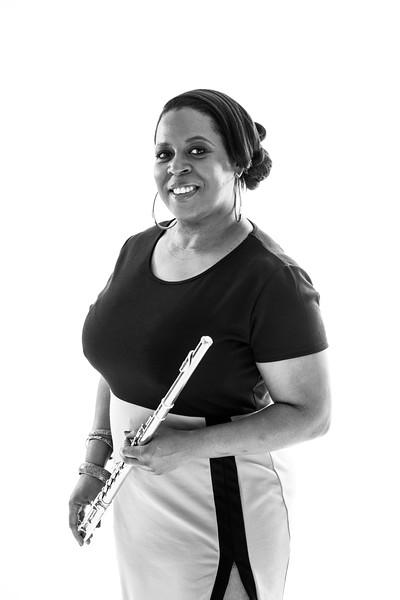
There isn’t an extensive duo repertoire for cello and double bass. Perhaps that was what attracted Julia Adolphe to compose her All in Starlight duet, which had its premiere performance from Herlin and Cox.
As was too common in the concert, just when you were beginning to be enthralled by a composer’s style — here, Adolphe’s use of instrumental counterpoint, unusual harmonies, and star-glitter pizzicato accents — the skies darkened and the piece ended. Please, may I have some more?
Trevor Weston’s Juba and Steven Snowden’s Appalachian Polaroids are both heavily influenced by folk music and folk dance traditions — the former reflecting the African American diaspora, the latter the deep folk roots of Appalachia.
Both works are for string quartet, but with distinctly different takes on roots music. Weston, who has clearly delved deeply into the musical traditions that became part of the African American heritage, references these rhythms and melodies but also — perhaps feeling the need to affirm his academic credentials — couches this material in a thick texture more akin to European modernism.
In contrast, Snowden quotes his sources literally, beginning with a scratchy field recording of a heavily accented woman of the hill country intoning the English ballad “Black Is the Color of My True Love’s Hair.” The vocal gradually fades in ghostly fashion while the quartet celebrates a set of fiddle tune variations on the original material.
The Mozart that followed, while enthusiastically performed, seemed extraneous. It would have been far better to take an intermission and allow the voices of the contemporary composers more time and room to breathe.


